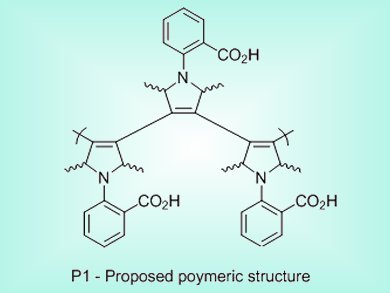Rolf Hartmann and co-workers, Helmholtz-Institute for Pharmaceutical Research, Saarbrücken, Germany, describe a case study that underlines the importance of scientific rigor and serves as an interesting cautionary tale.
During an investigation aimed at discovering novel RNA polymerase (RNAP) inhibitors, a small fragment library was examined. From this study compound 1 was identified as possessing mild biological activity. When 1 was synthesized in the lab (purity >96 %), however, no biological activity was observed. Several structurally similar compounds had been previously reported as inhibitors of bacterial RNAP. Unfortunately, after synthesis and biological testing of these literature compounds, limited activity was also observed.

The group recognized that compound stability could play an important role. To test this theory, 1 was heated to promote any potential degradation. HPLC and 1H NMR analysis indicated compound 1 polymerizes and indeed the derived polymer could be isolated by ultrafiltration. A polymeric structure P1 was proposed (pictured, top). Biological testing revealed that it was in fact polymer P1 which acted as an inhibitor instead of 1.
Further discussions on the method of inhibition are discussed within the manuscript but this tale certainly highlights the importance of not overlooking minor contaminants.
- A Detective Story in Drug Discovery: Elucidation of a Screening Artifact Reveals Polymeric Carboxylic Acids as Potent Inhibitors of RNA Polymerase,
Weixing Zhu, Matthias Groh, Jörg Haupenthal, Rolf W. Hartmann,
Chem. Eur. J. 2013.
DOI: 10.1002/chem.201301289




